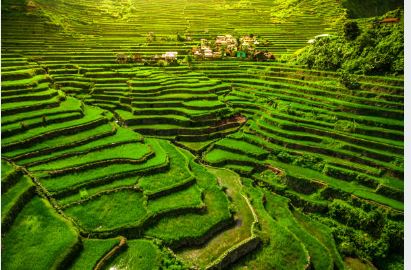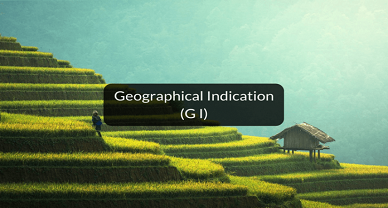Protection of Geographical Indications in Philippines
Introduction
A Geographical Indication (GI) is an intellectual property right protecting the name and identity of certain products which unique characteristics have developed due to a mix of local factors/influences either natural, due to a specific environment, and/or human, through the use of the wisdom/know-how of local producers. These products are, therefore, associated in the mind of the consumers with their origin and are named accordingly.

The term of protection in the countries protected GIs by trademark systems is specified with renewable condition. The protection of GIs in the sui generis system is in principle unlimited as long as the given quality, reputation or other characteristic of the product remain essentially attributable to that geographic origin. In this connection, the quality control system of GIs should be in place, and the country GI logo is available in some AMS in order to guarantee or certify the authenticity of such products.
It is important to protect GIs since it is vital in the competitive advantage of local and indigenous products. Protection for a GI is not subject to a certain period and will remain valid unless its registration is canceled. In order to increase the protection of geographical indications (GI) products in the Philippines, the Intellectual Property Office of the Philippines (IPOPHL) has issued implementing rules and regulations (IRR) on GI.
The Intellectual Property Office of the Philippines (IPOPHL) has drafted the implementing rules and regulations (IRR) on geographical indications (GI) in a bid to strengthen the protection of GI products in the country.
“Protection of geographical indications is vital in building the competitive advantage of our local and indigenous products,” read the draft IRR, which went through its first round of stakeholder consultations last May 12.
The IRR, drafted by the Bureau of Trademarks, aims to fulfill the recognition of GIs as protectible IP under the IP Code of 1997. It will also fulfill the obligation of the Philippines as a member of the World Trade Organization to provide reciprocal rights and GI protection to other members.
The draft IRR defines GIs as “any indication which identifies a good as originating in a territory, region or locality, where a given quality, reputation, or other characteristic of the good is essentially attributable to its geographical origin and/or human factors.”
Under the draft, GI registrants have rights to prevent the use of their products in the following manners:
• misleading the public as to the geographical origin of the goods;
• falsely representing to the public that the goods originate in another territory;
• for wines or spirits, using in translation or accompanied by expressions such as “kind,” “type,” “style,” “imitation,” “method,” “as produced in” or other similar qualifying terms;
• for agricultural products, foodstuff and any product of handicraft or industry, using in translation or accompanied by expressions such as “Kind,” “type,” “style,” “imitation,” “method,” “as produced in” or other similar qualifying terms, if such use would be misleading to the public;
• constituting an act of unfair competition as defined by the Paris Convention; and
• any other use similar or analogous to the above.
The IRR also provides the registration process and requirements for application.
Protection for a GI is not subject to a certain period and will remain valid unless its registration is canceled.
The Bureau of Trademarks could revoke a registration on the following grounds:
a. the conditions for protection have not been fulfilled;
b. there has been a change in the geographical origin of the goods including the natural and human factor;
c. a court or tribunal rules out that the identified producer has no effective control over the use of the GI, standards of production of the goods and other product specifications;
d. the registration of the GI was obtained through false statements and documents during the course of the application; and
e. the registered or protected geographical indication has been proven to be generic for, or a common or customary name of the goods covered in the Philippines.
GIs in the Philippines are protected under the Trademarks section of the Intellectual Property Code of 1997. The famous Guimaras Mangoes and the Tau Sebu T’nalak, registered as collective marks, are identified as potential GIs.
Others are Bicol Pili, Davao Pomelo, Cordillera Heirloom Rice; Camiguin Lanzones; Davao Cacao; Kalinga Coffee; Antique’s Bagtason Loom; Aurora’s Sabutan Weave; Samar’s Basey Banig; Basilan and Zamboanga’s Yakan cloth; and, most recently, the Masbate beef and Baguio Strawberry.
When no opposition is filed within thirty (30) days after the publication, the mark is deemed registered on the next calendar day following the expiration of the opposition period. In cases where a motion for extension for the period to file an opposition is granted by the Bureau of Legal Affairs, the mark is deemed registered the day following the expiration of the extension period. When an opposition is filed, a mark shall be considered registered on the date the decision or final order giving due course to the application becomes final and executory.
Conclusion
While the country and the officials have made progress in our effort to promote and strengthen the protection of potential GIs in the country, there is still a lot of work to do, particularly, in the organizational development and capacity building of our farmer-producer groups. There remains the need to establish strong internal and external control to adequately ensure the high quality of goods eligible for GI protection, as well as to provide an appropriate legal framework to strengthen GI protection.
Author: Tanya Saraswat, in case of any queries please contact/write back to us at support@ipandlegalfilings.com or IP & Legal Filing.

